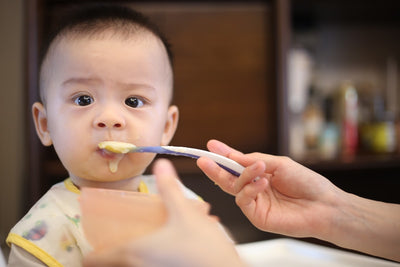The Price of Breastfeeding: WIC in Lower Income Communities
The Price of Breastfeeding: WIC in Lower Income Communities
by Jordan berns
Did you know that breastfeeding not only offers great health benefits, but financial advantages as well? In fact, there is a direct relationship between time spent breastfeeding and the amount of money saved. Choosing to breastfeed is a very personal decision, but some women who rely on government assistance are not given adequate resources to practice breastfeeding if they so desire.
Beyond saving money on formula and bottles, breastfeeding also helps prevent common illnesses which could be costly and dangerous, says a 2010 Boston experiment. This study revealed that if 90% of United States women breastfed for a minimum of six months, 911 infant deaths would be prevented. It would also save mothers $13 billion a year. If 80% of mothers breastfed for six months, 741 people would be saved in the U.S. as well as $10.5 billion. If these numbers from 2007 were adjusted for inflation, the savings would increase from $10.5 billion to $13,319,284,081.37 and $13 billion would translate to $16,490,542,195.99 by the year 2021. In 2007, breastfeeding reduced cases of ear infections, intestinal infections, and gastroenteritis by 50%, resulting in an annual saving of 1.9 billion ($2,410,156,167.11 in 2021).
Who is eligible for WIC?
Even with the economic advantages of breastfeeding, babies and young children can still be very expensive. For those whose income is 185% below the federal poverty line, programs like the WIC are there to lend a helping hand. Eligible people for WIC benefits include women who are pregnant or breastfeeding (until six months postpartum) and children under five-years-old. WIC is a federal program that provides Special Supplemental Nutrition for Women, Infants, and Children (WIC). WIC receives $6.2 billion dollars in annual funding. Every month, the WIC offers assistance to 4.3 million children, 2 million babies, and 2 million mothers. After being evaluated by a strict set of criteria, WIC participants must reapply every six months. The WIC aims to provide education about and access to healthy dietary practices and give healthcare referrals, among other things. One of the main objectives is to promote breastfeeding.
A December 2016 study published in The Journal of the American Osteopathic Association examined the link between rates of exclusive breastfeeding and 784 women who received benefits from WIC. It was found that mothers enrolled in WIC were 43% less likely to exclusively breastfeed as compared to those who were not eligible for assistance. These numbers are supported by similar discoveries by studies from 2002 and 2008.
Every woman should have the option of breastfeeding if she wants to.
There are many factors contributing to the unpopularity of breastfeeding with WIC participants. One of the failures of WIC’s educational programs is the use of outdated information and a lack of standardization across different centers. Their breastfeeding programs have proven to not be terribly effective. WIC’s educational outreach materials geared towards pregnant women only increase the likelihood of exclusive breastfeeding by a little.
Despite the uphill battle, there have been plenty of good ideas and successful practices to help women that choose to breastfeed. Many policy and healthcare officials believe that breastfeeding rates would increase if WIC provided access to breast pumps and lactation consultants. Some steps that have already proved beneficial are the implementation of peer-counseling programs (found in 69% of WIC centers). A better line of communication between hospitals and WIC offices has been tremendously helpful. Beyond that, WIC has tried to encourage breastfeeding by offering better, larger, and more varied food packets to those who are nursing; limiting formula after one month postpartum; and allowing breastfeeding women to stay in the program for an additional six months without having to reapply.
Policy changes can make breastfeeding easier.
The WIC cannot do it alone: programs to increase support from the workplace to religious organizations to friends and partners are necessary to the WIC’s success. Better access to breast pumps and longer maternity leave as well as an aggressive social media campaign may encourage women to breastfeed. For those who are struggling to breastfeed, the FSA, HSA, and HRA help women purchase a range of supplemental products like bottles, breast pumps, nursing pads, breast milk storage bags, and breast milk testing kits. Ultimately, this is a complex issue with a complicated answer that can’t be fixed overnight. Hopefully, with well-thought-out changes to a critical program, all those who want to breastfeed will be able to.






